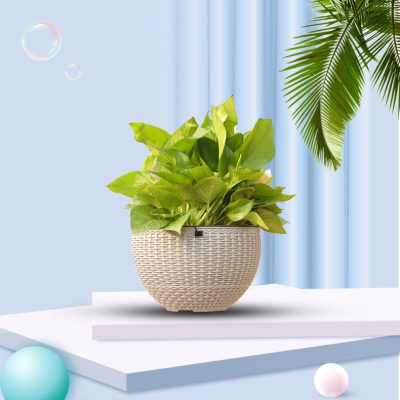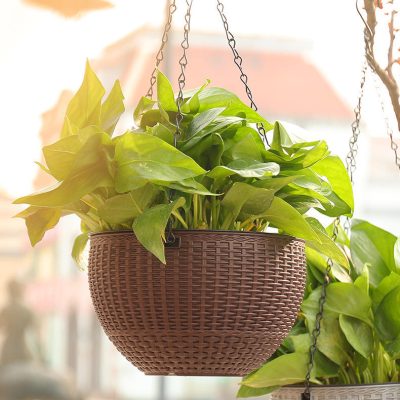The choice between plastic pots and other plant containers depends on various factors, including your specific needs and preferences. Here are some comparisons to consider:
- Plastic Pots:
- Advantages: Plastic pots are lightweight, durable, and widely available. They come in various sizes, shapes, and colors, offering versatility in terms of design. Plastic pots are generally more affordable than some alternative materials. They are also easy to clean and maintain.
- Considerations: Plastic pots may not provide as much insulation as other materials, so plant roots can be more susceptible to temperature fluctuations. They may also deteriorate over time when exposed to direct sunlight, causing fading or brittleness.
- Clay or Terracotta Pots:
- Advantages: Clay or terracotta pots are porous, allowing for better air circulation and moisture regulation. They provide natural insulation for plant roots and help prevent overwatering by allowing excess moisture to evaporate through the pot’s walls. These pots have an appealing aesthetic and can enhance the overall look of your garden.
- Considerations: Clay pots can be heavier than plastic pots, which may make them less convenient for moving or rearranging plants. They may also be more expensive compared to plastic pots. Clay pots are prone to cracking if exposed to freezing temperatures or if they dry out completely.
- Ceramic or Glazed Pots:
- Advantages: Ceramic or glazed pots come in various attractive designs and colors, adding visual appeal to your garden or indoor space. They are durable and provide good insulation for plant roots. Glazed pots also have a smoother surface that can be easier to clean and maintain.
- Considerations: Ceramic pots tend to be heavier than plastic pots, which can make them challenging to move around. They are generally more expensive and can be more fragile, as the glaze may chip or crack over time.
- Fabric Grow Bags:
- Advantages: Fabric grow bags, typically made from non-woven fabric or felt-like material, offer excellent drainage and root aeration. They promote healthy root development, prevent root circling, and can be folded or flattened for easy storage. Fabric grow bags are also lightweight and can be used for both indoor and outdoor gardening.
- Considerations: Fabric grow bags may require more frequent watering compared to plastic pots as the fabric can allow for quicker evaporation. They may also need additional support or a stable structure to prevent them from toppling over.
- Hanging Baskets:
- Advantages: Hanging baskets allow for vertical gardening and can be an excellent space-saving option. They come in various materials, such as plastic, wire, or woven materials, providing versatility in design. Hanging baskets add visual interest to your garden and allow trailing plants to cascade down attractively.
- Considerations: Hanging baskets typically have limited space for root growth, so they require more frequent watering and fertilization. They may also be prone to drying out quickly, especially during hot weather.
Ultimately, the choice between plastic pots and other containers depends on factors such as your gardening goals, the specific needs of your plants, the aesthetics you desire, and your budget. Consider the advantages and considerations of each option to determine which container type is ideal for your plants and gardening situation. You can also mix and match different types of containers to create a diverse and visually appealing garden.








